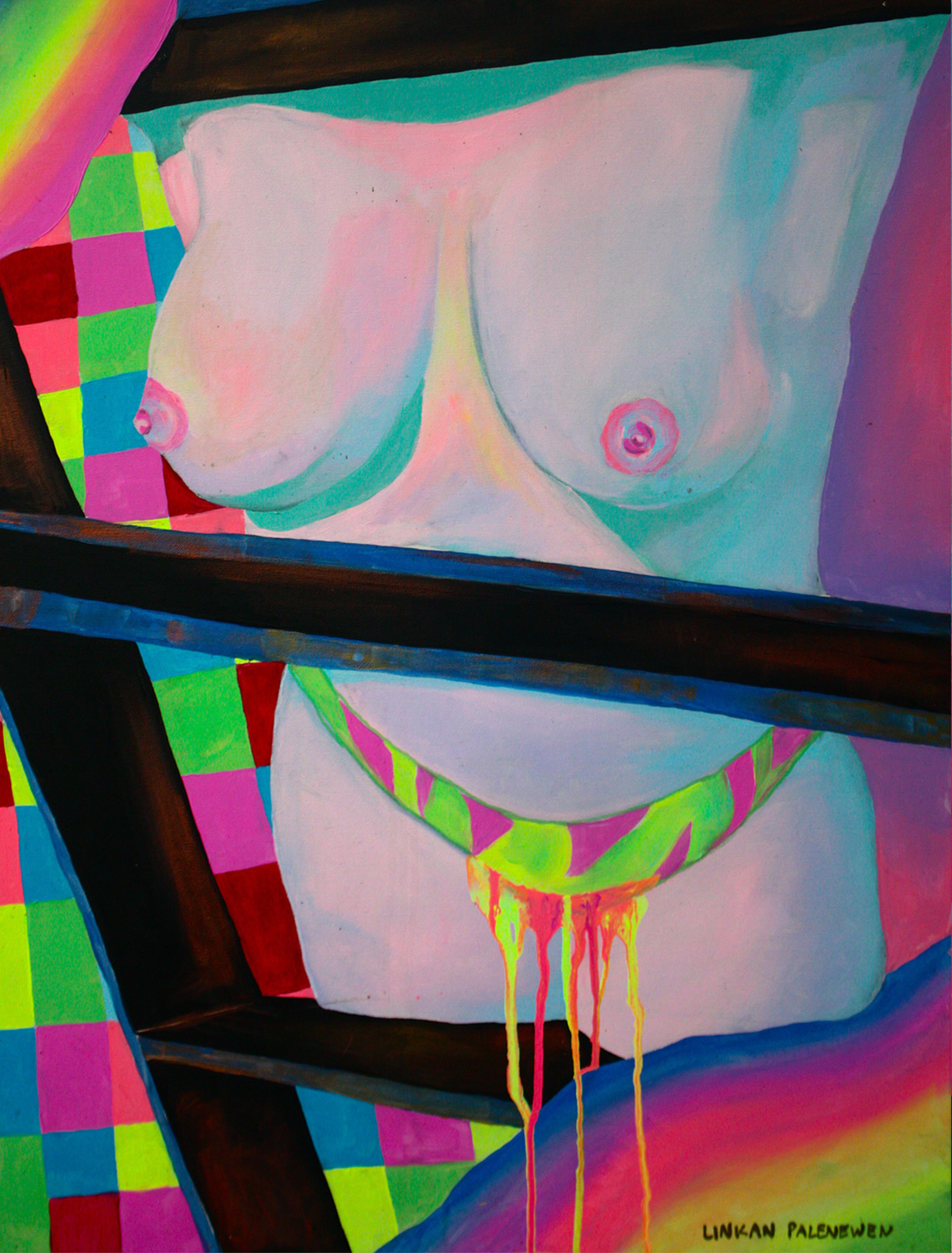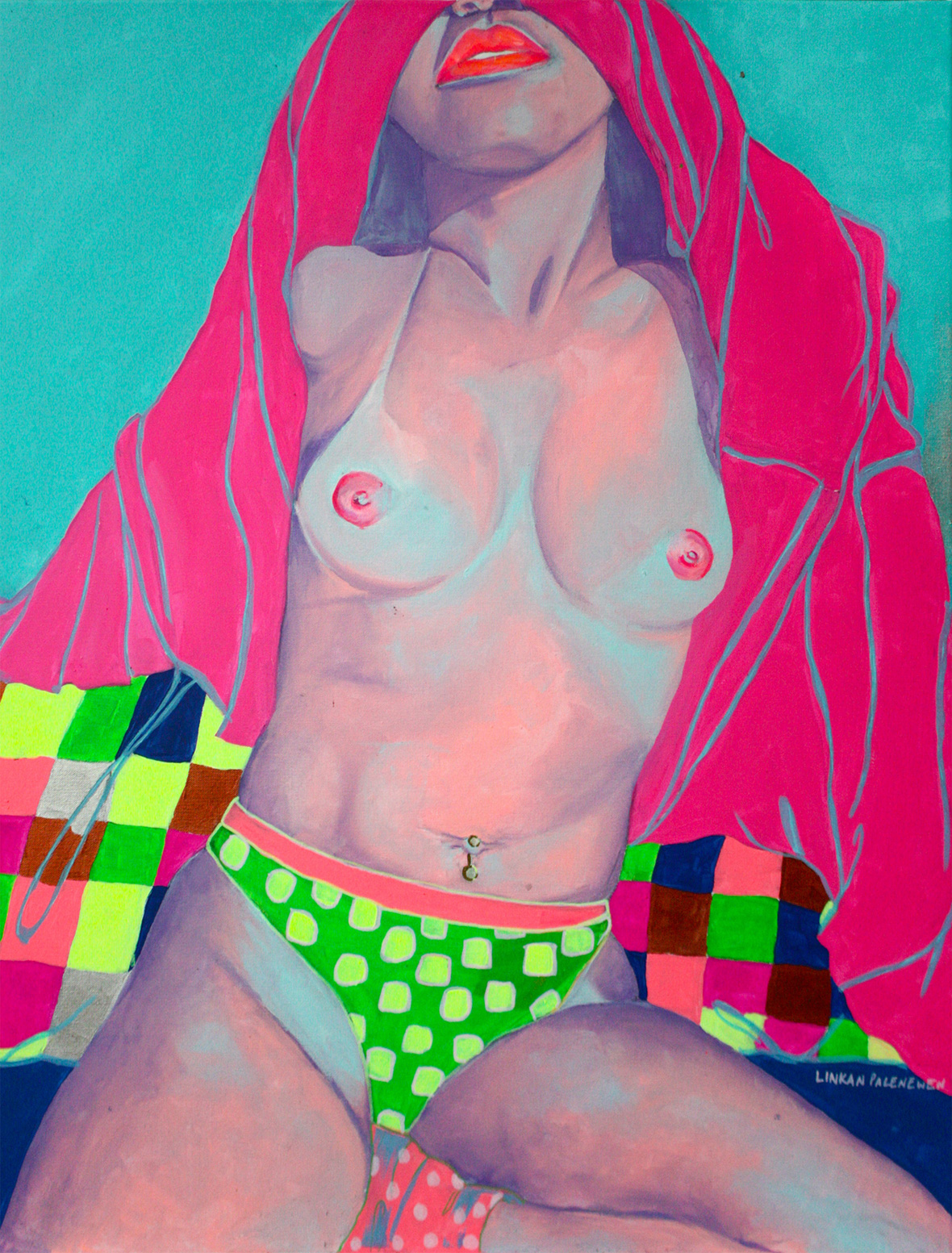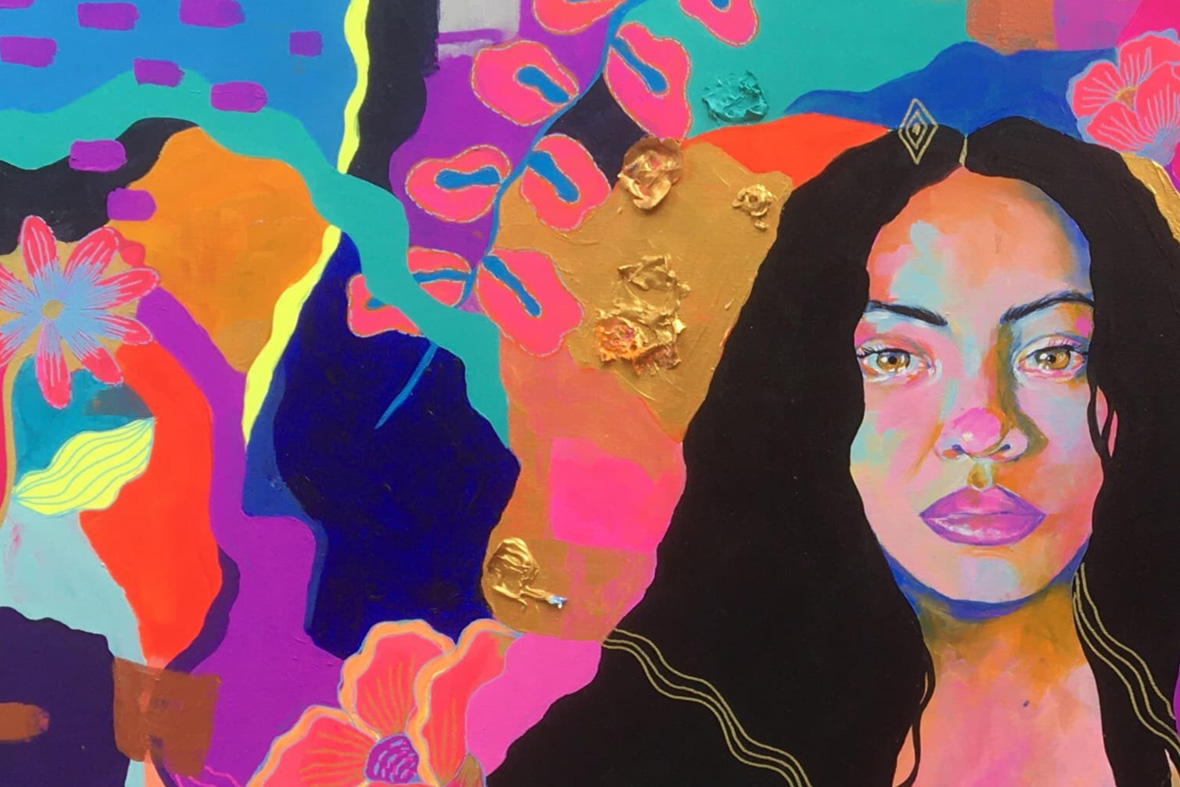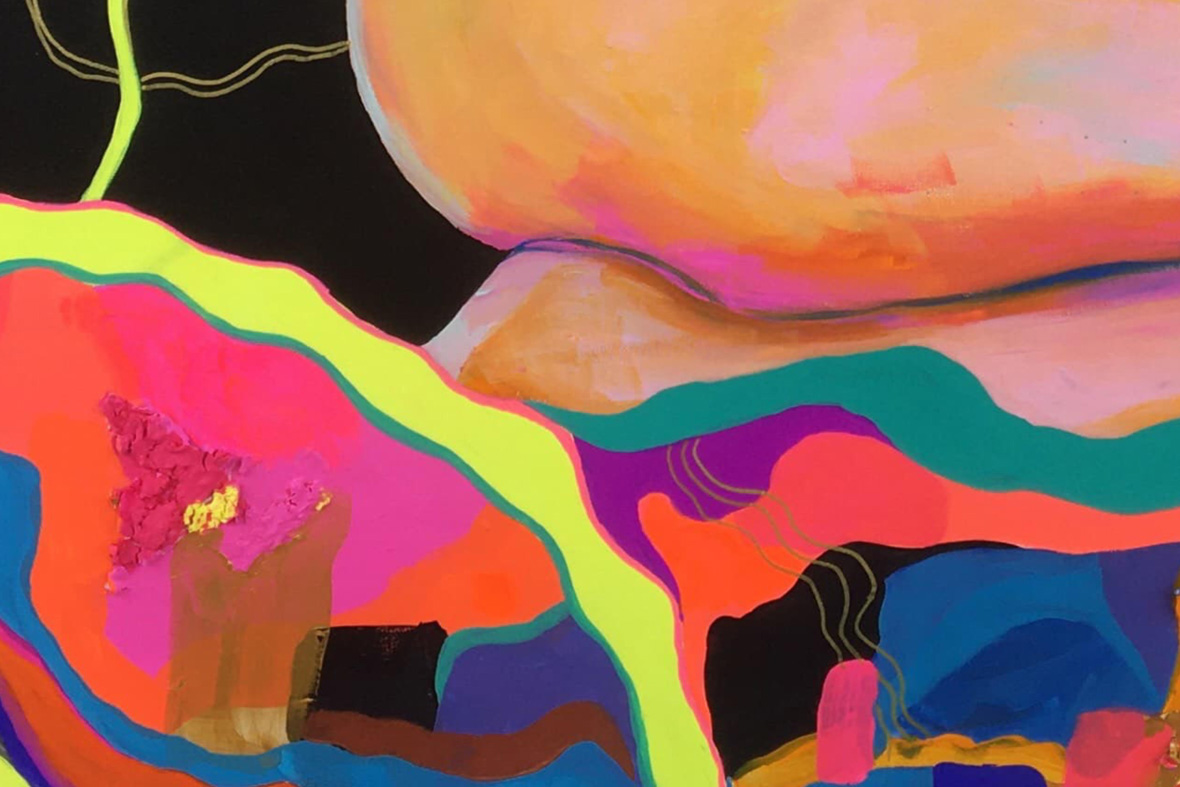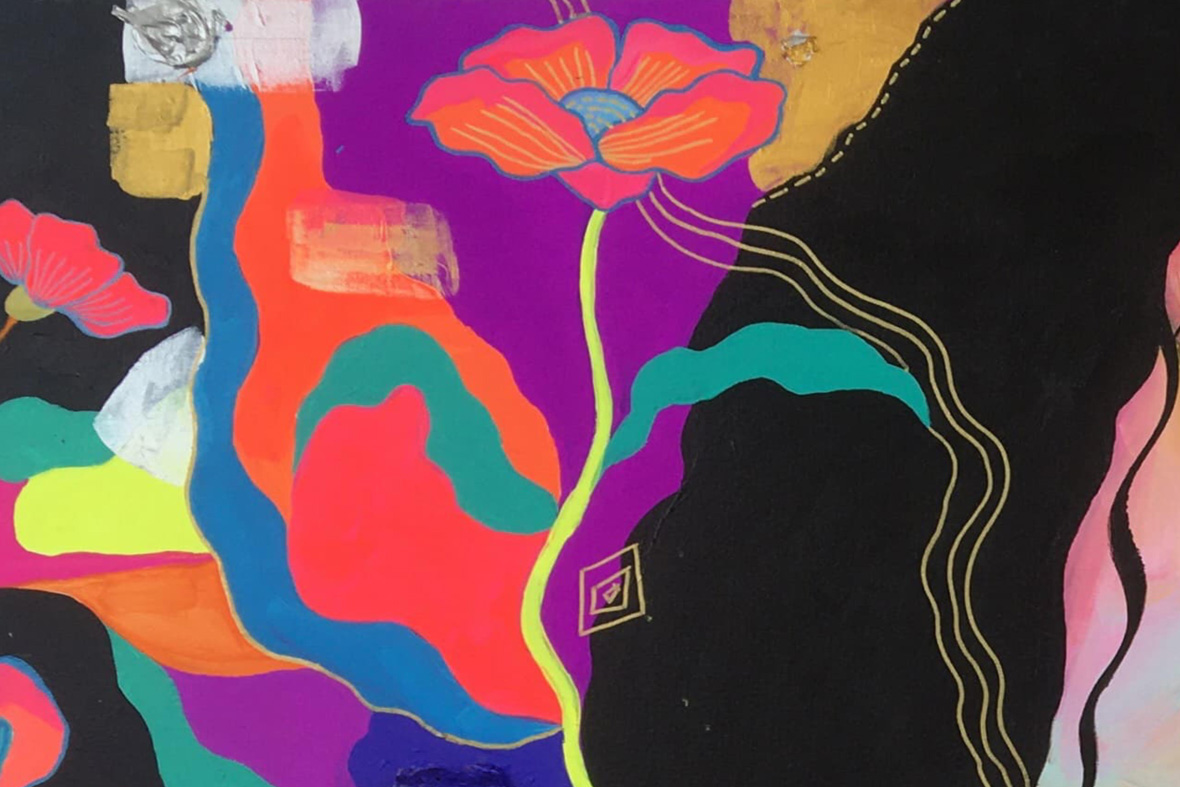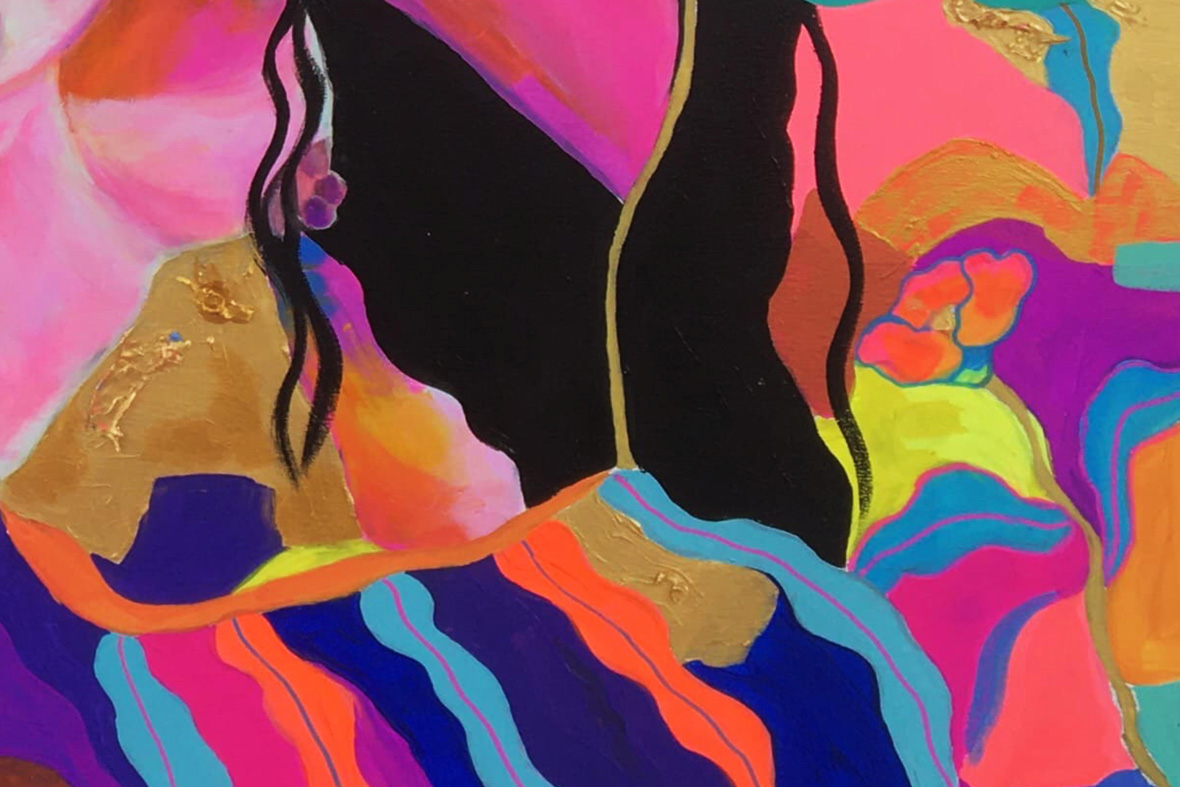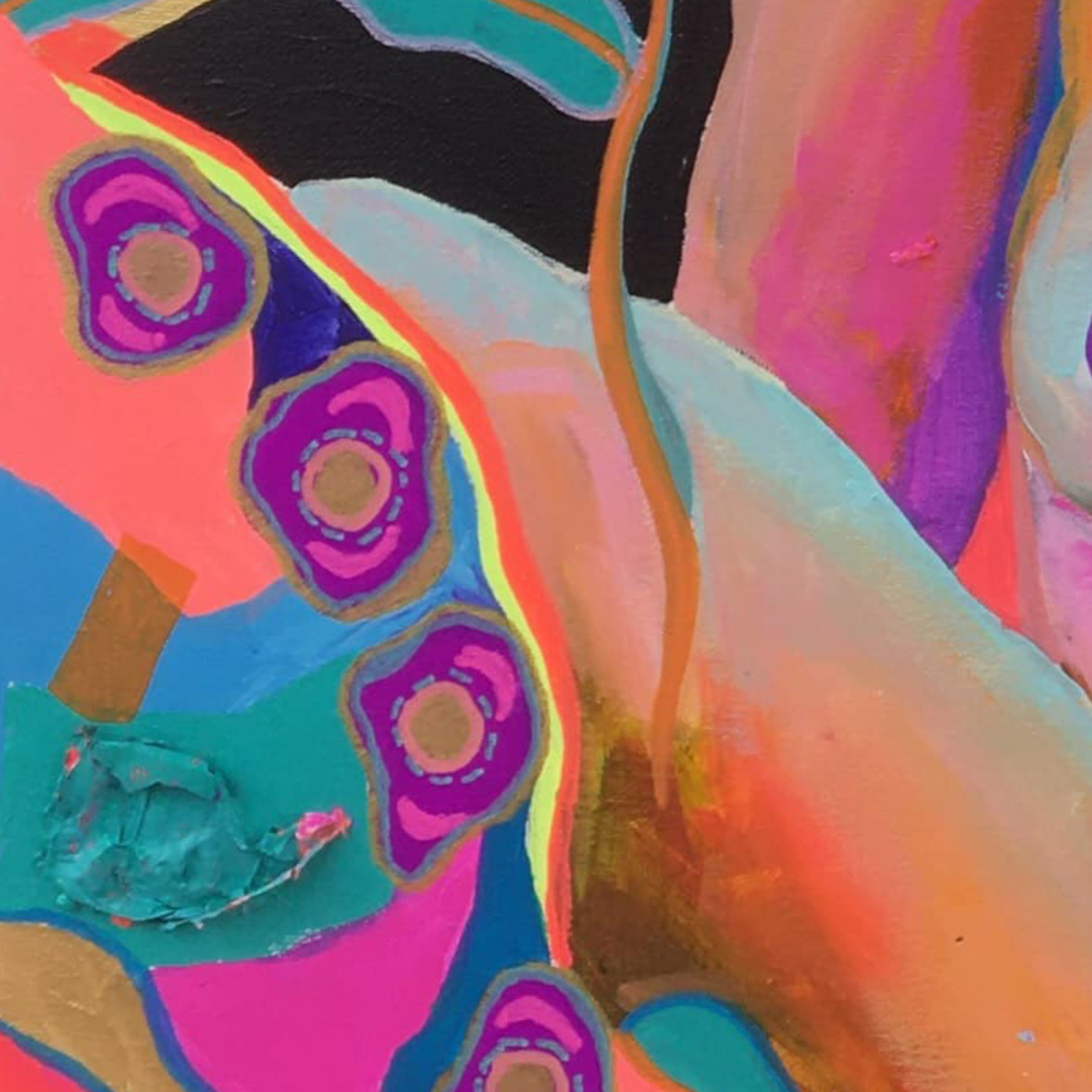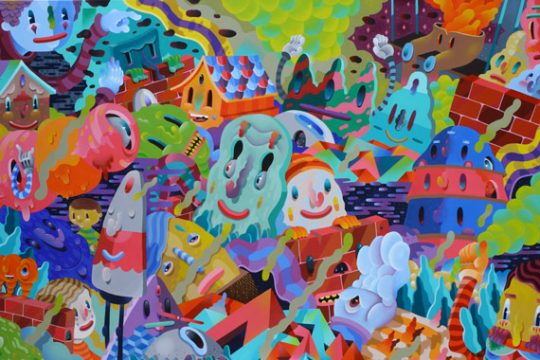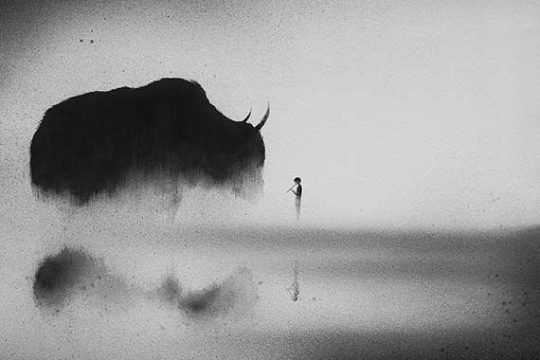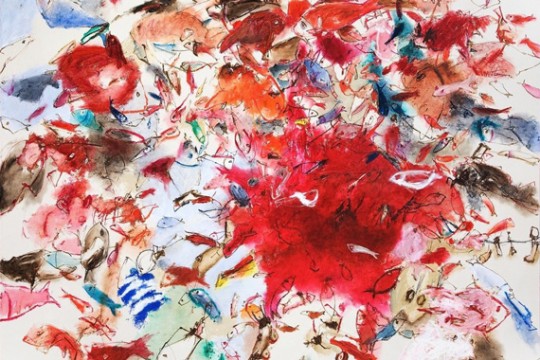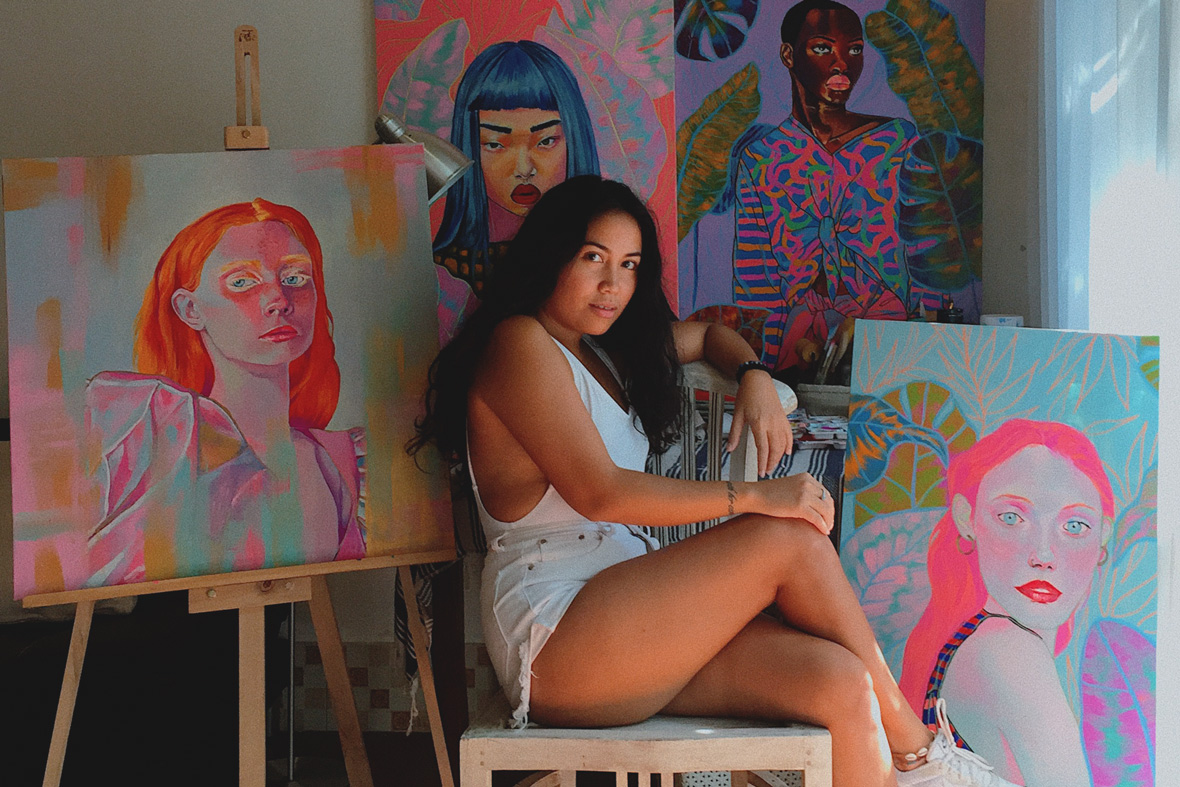
On Instagram, Indonesia-based painter Linkan Palenewen goes by Candylcker—a handle that’s not as innocuous as it seems. “The excitement that a kid experiences when they see candy is much like how an adult reacts to sex,” she says. The primal appeal of sex has long fascinated Palenewen.
For her, sexuality can even be a lens through which she can explore other topics. In Femme Fatale, the first of her works that deal with body positivity, she paints her subjects—often close female friends—in various states of undress. Through her use of vibrant neons, illustrative brushstrokes, and attention to composition, Palenewen’s acrylic stripteases demand the viewers’ undivided attention.
生活在巴厘岛的印尼画家 Linkan Palenewen 的 Instagram 帐号叫 Candylcker,舔糖人。究其原因,Linkan 说是因为她觉得“人对性的兴趣就像小孩见到糖一样。”这种本能般的兴趣使她着迷,也促使了她创作。
对她来说,性甚至像是一枚镜头,通过它可以探索其他话题。《致命女郎》(Femme Fatale)就是她开始探索“身体自爱”议题的第一个系列,她邀请身边朋友成为她的裸体模特,她把绘画对象从面部肖像彻底转向裸露的女体。Linkan 和以往一样,使用带有一定灰度的荧光反差色来高调凸显主体。高亮度色块的搭配与插画风格的写实线条描绘使这些肖像充满真实的动感。
Palenewen believes art shouldn’t only be beautiful, and deeper concepts belie her aesthetically pleasing work.”My colors are vibrant, but people have told me there’s a darkness within my paintings—as if my inner world was a lot less colorful than my art,” she says. These assertions were validated as she continued making art.
但创作仅充满装饰性的画了似乎渐渐满足不了她了。“我不是一味想使性或裸体这样的题材看起来五彩缤纷,”Linkan 说,“很多人都说过,觉得我的作品并不是很明快,好像我内心里最真实的想法不是那样的。”这个想法在她后来的创作过程中进一步被验证了。
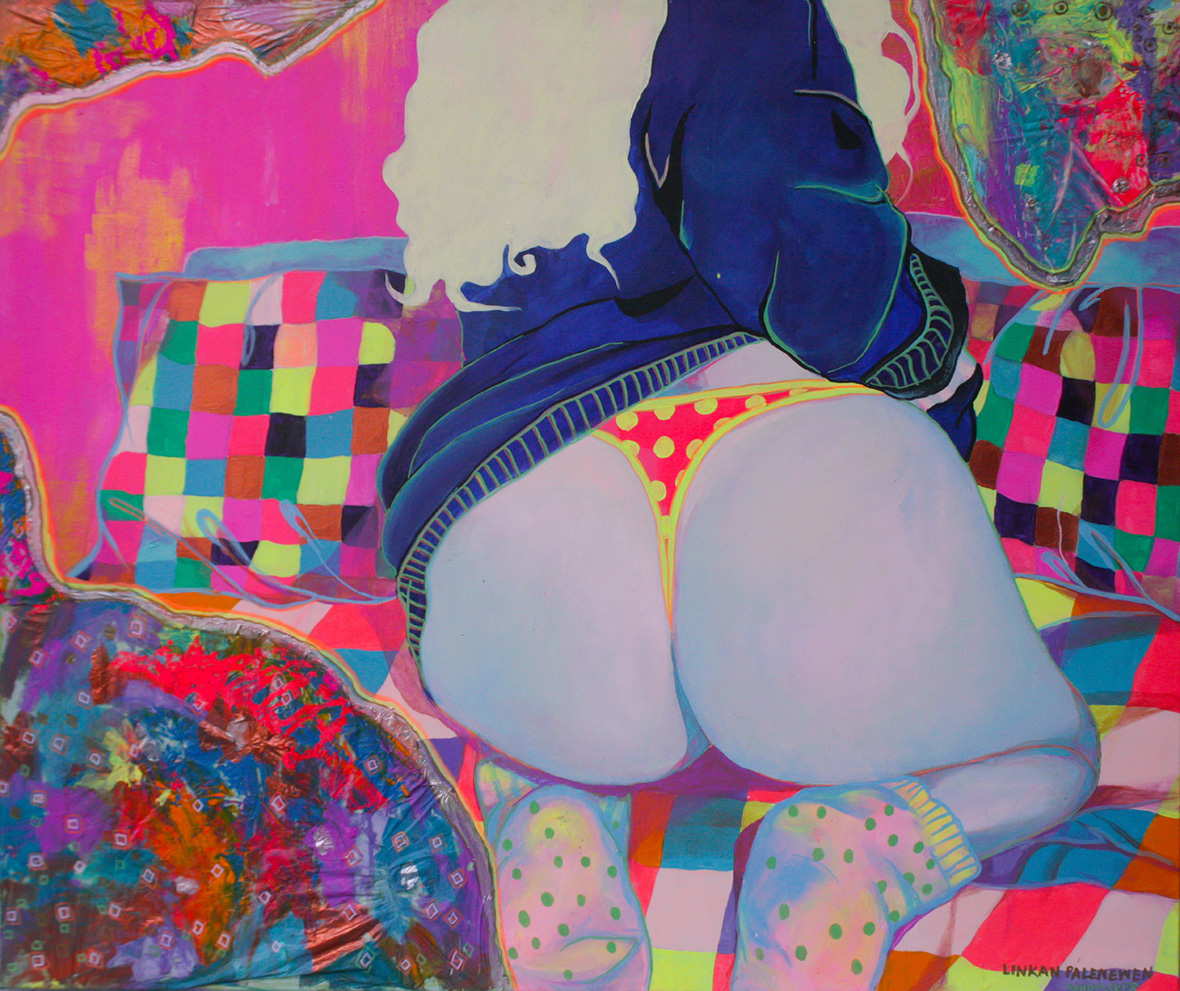
Palenewen’s recently completed series, titled Stigma, was a major creative breakthrough for her. Due to the pandemic, it has yet to be showcased to the public. If her past works are, as she puts it, her way of “documenting love,” then this new series is the exploration of a new form of love: the love of self. This project consists entirely of nude self-portraits, and her hallmark use of neon seems even more pronounced, though they’re tinged with darker hues.
“So much negativity filled my mind while I worked on it,” she recalls. “I started judging myself and feeling discouraged. But I channeled these fears and dark thoughts into the art. To me, this series is a proclamation: women who want to express themselves shouldn’t be shamed by society, even if it’s a taboo subject like their sexual needs. The embarrassment I felt while painting my own nude body attests to the necessity of this series.”
Linkan本该在今年年初迎来她的首个个展《羞耻》(Stigma),但因为疫情的原因被无期限推后了。“疫情让一切都暂停了。老实说,它让我从一个充满焦虑甚至恐惧的状态走出来,并投入到一种作为艺术家的孤注一掷。恐惧没了,焦虑也不见了。”Linkan 在《羞耻》(Stigma)系列里,向前跨了很大的一步。如果说绘画是她收集爱的方式,自爱则是她通过创作这次创作得到的最大的收获。此系列全是 Linkan 的裸体自画像。在这组自作品中,相较于之前的《致命女郎》系列,Linkan 选择使用更加低沉的颜色,与更多黑色。她说:“创作这组作品的过程里,我感受到很多前所未有的疑问和恐惧。我把这种恐惧、以及我性格中本来就有的阴暗面表达了出来。这组作品对于我来说是一个声明,一种作为女性、生活在因文化或宗教等原因、而普遍存在压抑尤其是性压抑的印度尼西亚的呐喊。我画并展示自己裸体的过程有多难,这组作品有就多必要。”
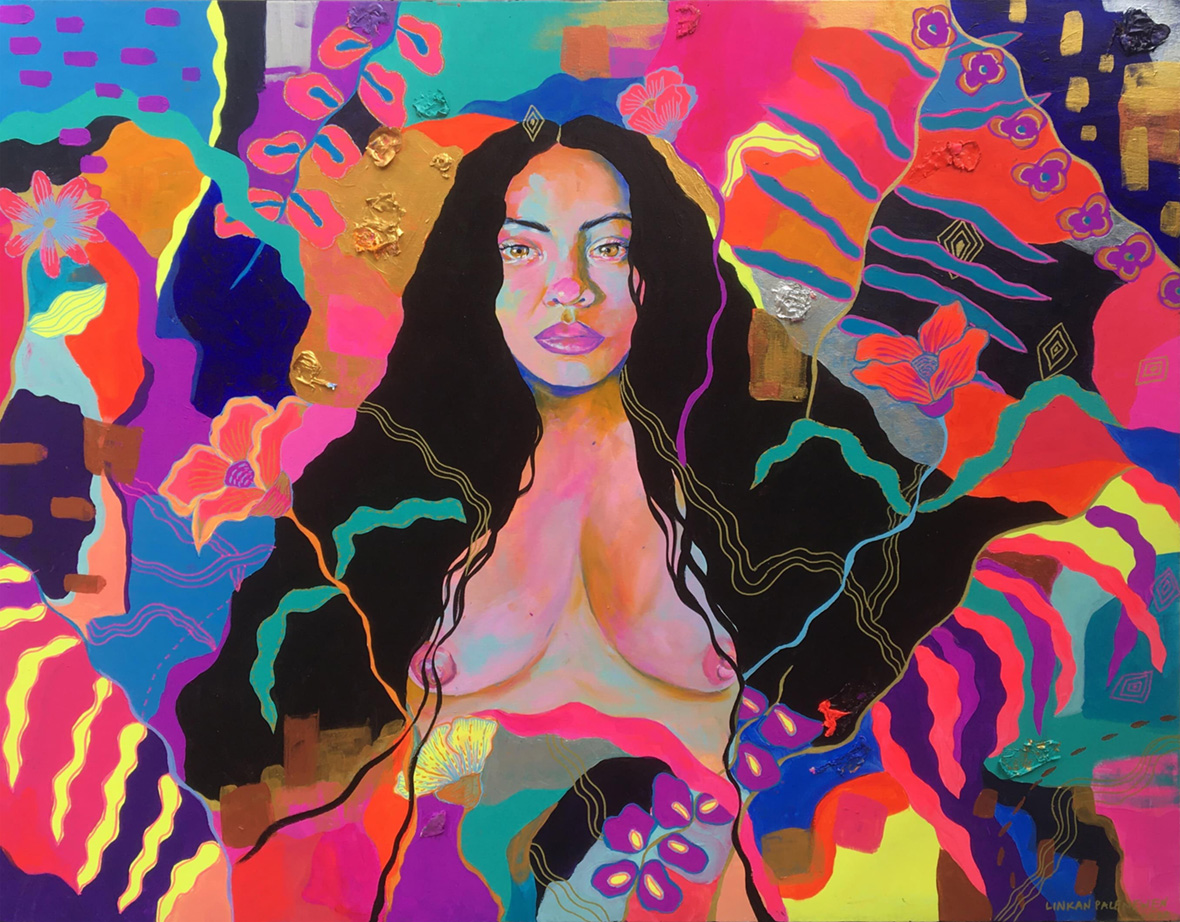
Experienced artists are accustomed to the introspective nature of creating art. But for Palenewen, a budding artist, it was a surprising confrontation with shame. This awareness of her own insecurities was liberating, and her embrace of this discomfort instill her works with a sense of candid honesty.
On a humid afternoon, we met up with Palenewen in Bali’s Joshua District, where pieces from Femme Fatale are still on display. We sat with her and shot the breeze about creativity, femininity, and everything else under the sun.
自我审视的这一步,很多成熟艺术家早已经历过,但 Linkan 的价值也许正是她羞涩的姿态,以及对自己羞涩的包容。她把这种羞涩及宽容本身投入到作品,使得作品有一种自然的和谐和果敢。而作者的开诚布公也使这个自我审视的过程通过作品不加修饰的表达出来,使得作品充满了生命力。在同样充满生命力的艳阳天下,Neocha 和 Linkan相约在Canggu 附近的 Joshua District 创意中心,这里正在出售她《致命女郎》系列作品,她坐在自己的画下,和我们聊了聊关于画画创作的一些故事。

Neocha: Can you introduce yourself? What did you do before coming to Bali?
Palenewen: In Jakarta, I studied fashion design at university and settled in Bali after graduating. Jakarta felt too limiting to me, while Bali felt freer and much more diverse.
Neocha: Linkan 你是哪里人?在来到巴厘岛前是做什么的呢?
Linkan: 我大学在雅加达学服装设计,毕业后定居于巴厘岛。大概因为雅加达的管制太多,巴厘岛自由多元化的气氛比较适合我。
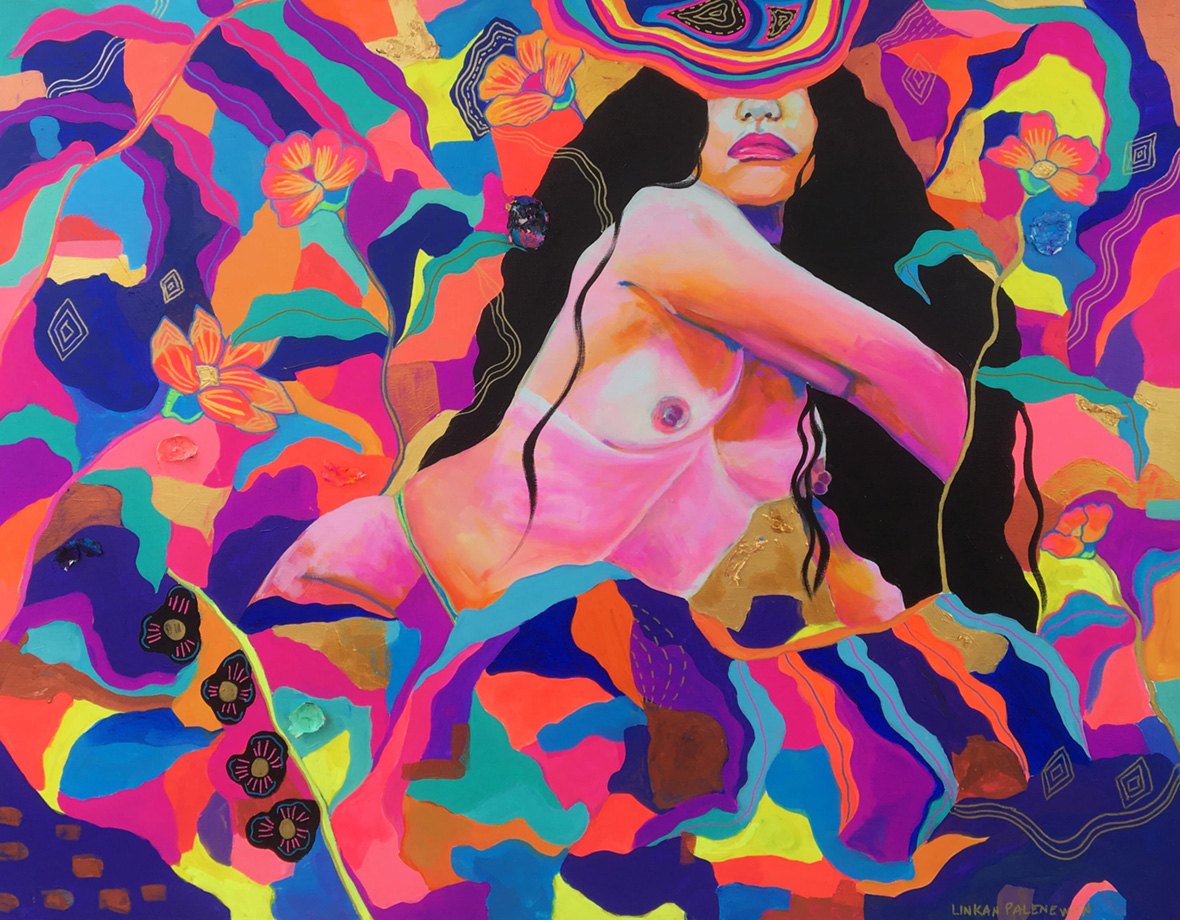
Neocha: You mentioned that you studied fashion design in school, so how did you get into art?
Palenewen: I actually started out studying interior design, but I’ve always wanted to make art, but I didn’t know how I could have a career if I only studied art. I ended up switching my major to fashion design—it was the most ‘artistic’ job I could think of. I learned a lot of technique while studying fashion design, and I developed my own style from thatt.
Neocha: 你说之前是学服装设计的,那你是什么时候想转行画画的呢?
Linkan: 我一开始学的是室内设计。虽然我一直想学艺术,但当时的我不知道纯艺术学完出来能做什么工作。所以我就换了服装设计,感觉那是我那时候能想到的最“艺术”的工作了。我从小就爱画画,但都是自学的。直到学服装设计的时候才学了一点技巧,我就从那一点技巧出发,慢慢发展自己的风格。
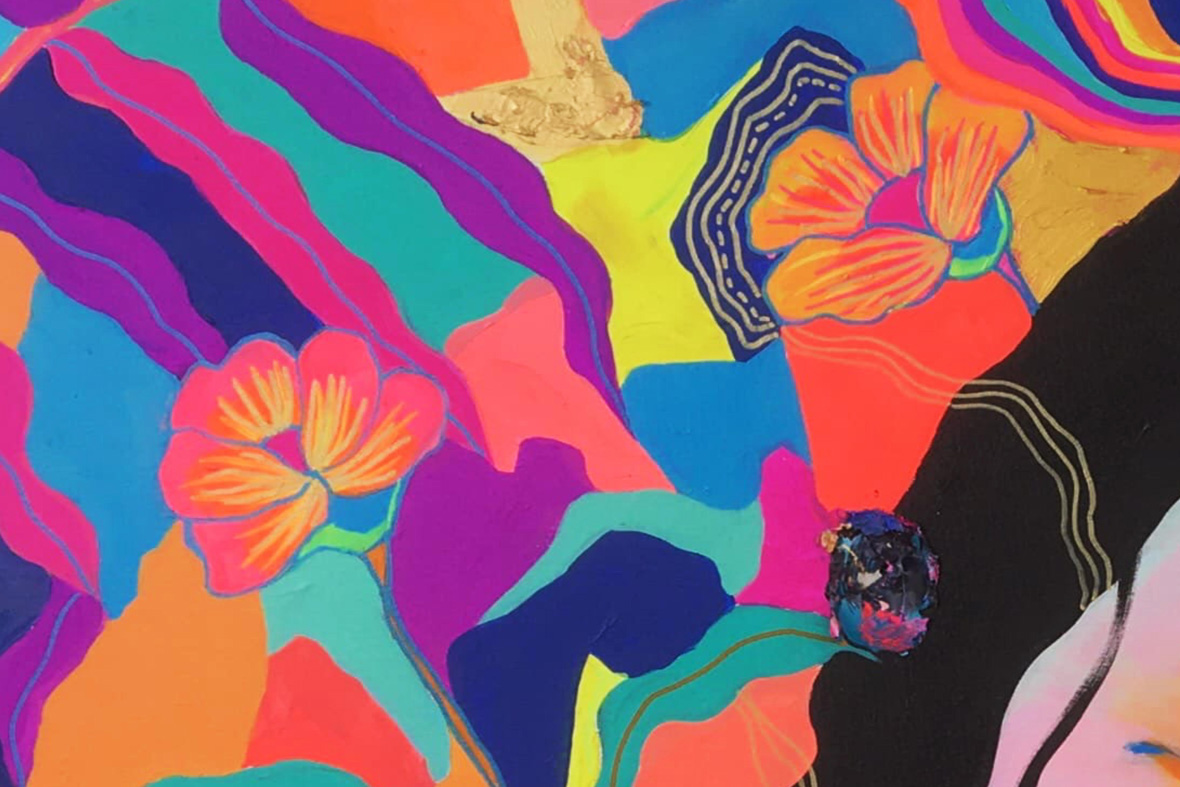
Neocha: Can you talk us through the concepts behind Femme Fatale and how it’s tied to Stigma?
Palenewen: As a woman, I am more or less inspired by other women, especially those in my life. Femme Fatale was created to uplift my close friends, the women that inspire me. I wanted to encourage them to be more comfortable in their own skin. One night I did a live painting of one of Femme Fatale and I invited all of my friends to come and to experience for themselves how people see and react to the paintings. My hope was that the audiences’ positive energy can help them better recognize their beauty. The idea for Stigma came because it like I was being a hypocrite by not putting my own body out there.
Neocha: 可以和我们谈谈《致命女郎》吗?它和接下去的系列《羞耻》有哪些不同?
Linkan: 《致命女郎》主要是我为朋友们创作的,作为她们为我带来灵感的回应。有一次我邀请了一个朋友现场画她,还邀请了一些人来看。我希望她能从现场观众热烈真诚的回应中看到自己的价值,也希望这种正能量在将来也能一直为她所用。这也成为我做《羞耻》的灵感,因为我意识到我面对自己的时候有些双重标准。
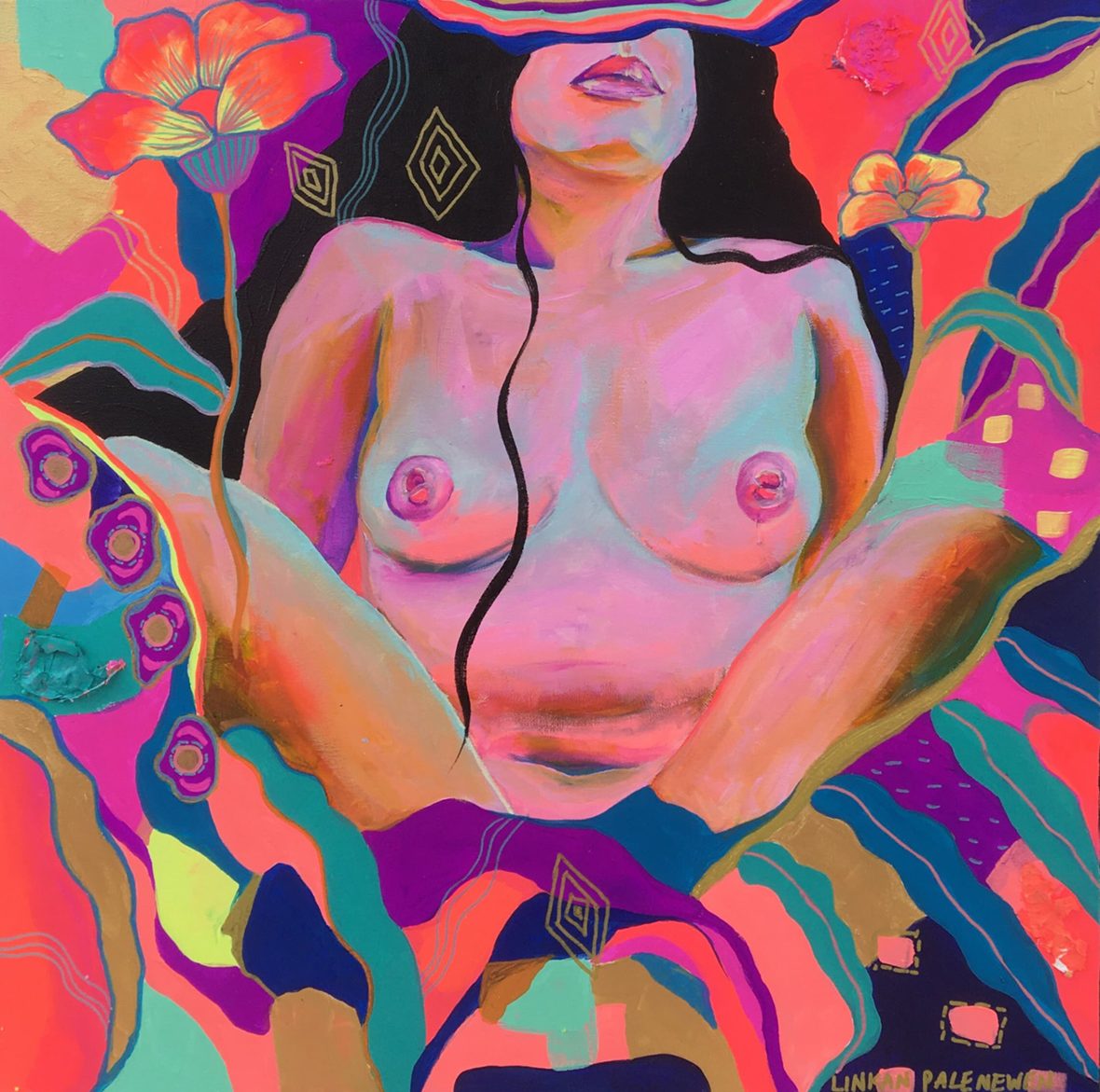
Neocha: To you, what is the significance of Stigma?
Palenewen: Stigma was not the first title that came to mind actually. I originally named the series The Garden Of Eve. The idea was to create art that could show my ‘world’ with full transparency, expose the vulnerable side of me as a woman, and how the world influences my idea of femininity. But during the process, the series became more personal. It brought feelings that I hadn’t yet experienced before in my art. Little did I realize, I was shackled by stigmas that have been there the entire time, stigmas that exist because I’m a woman. The prospect of finishing the series was terrifying.
The word “stigma” is forever a part of a woman’s life. Negative stereotypes have been given to women since ancient times. The term stigma has negative connotations, but funny enough, stigma is also the name for the part of a flower that receives the pollen during pollination. The stigma is what helps a flower grow. Stigma, as a series, has helped me grow as an artist and a woman.
Neocha: 新系列名称《羞耻》的含义是什么?
Linkan: 一开始这个系列不叫《羞耻》(Stigma),叫《夏娃的花园》,比喻我作为女性生活在当今社会的脆弱。但是创作的过程中,随着一切的深入,它打开了一种我作为艺术家从未有过的感受。它下意识的与我作为女性一种羞耻感仅仅相连,让我害怕到几度想要放弃创作。“羞耻”这个词跟女性身份是紧密相连,从圣经故事就开始了。大部分人都觉得它是个负面的词,但是Stigma这个词本身也是花的主要生殖器官“柱头”的意思,帮助植物繁殖生长。而“羞耻”也是帮我作为艺术家和女性成长和成熟很重要的一个元素。
Neocha: The fortitude required to push past the self-doubt you felt is inspiring. What gave you strength?
Palenewen: The friends who were willing to model for Femme Fatale were my biggest inspiration when I was stuck. I feel the need to be in their shoes, to be as brave as them. But as people say, “It’s easier said than done.”
The shame and doubt I felt was tough to process, but a friend told me that being an artist isn’t easy and nor should it be. He said that the emotions I was experiencing means I’m on the right path. His words of encouragement and faith in me were tremendously uplifting.
Neocha: 你超越自我审视和自我意识而展现自己内心世界的力量是从哪里来的?
Linkan: 《致命女郎》系列中我的模特们对我的影响是最大的。我想以她们马首是瞻吧,这说起来简单做起来真的很难。直到一个艺术家朋友告诉我,当艺术家经常不是那么快乐的,而我所经历的痛苦恰恰证明我在对的方向上前进。朋友的鼓励,给了我自信。
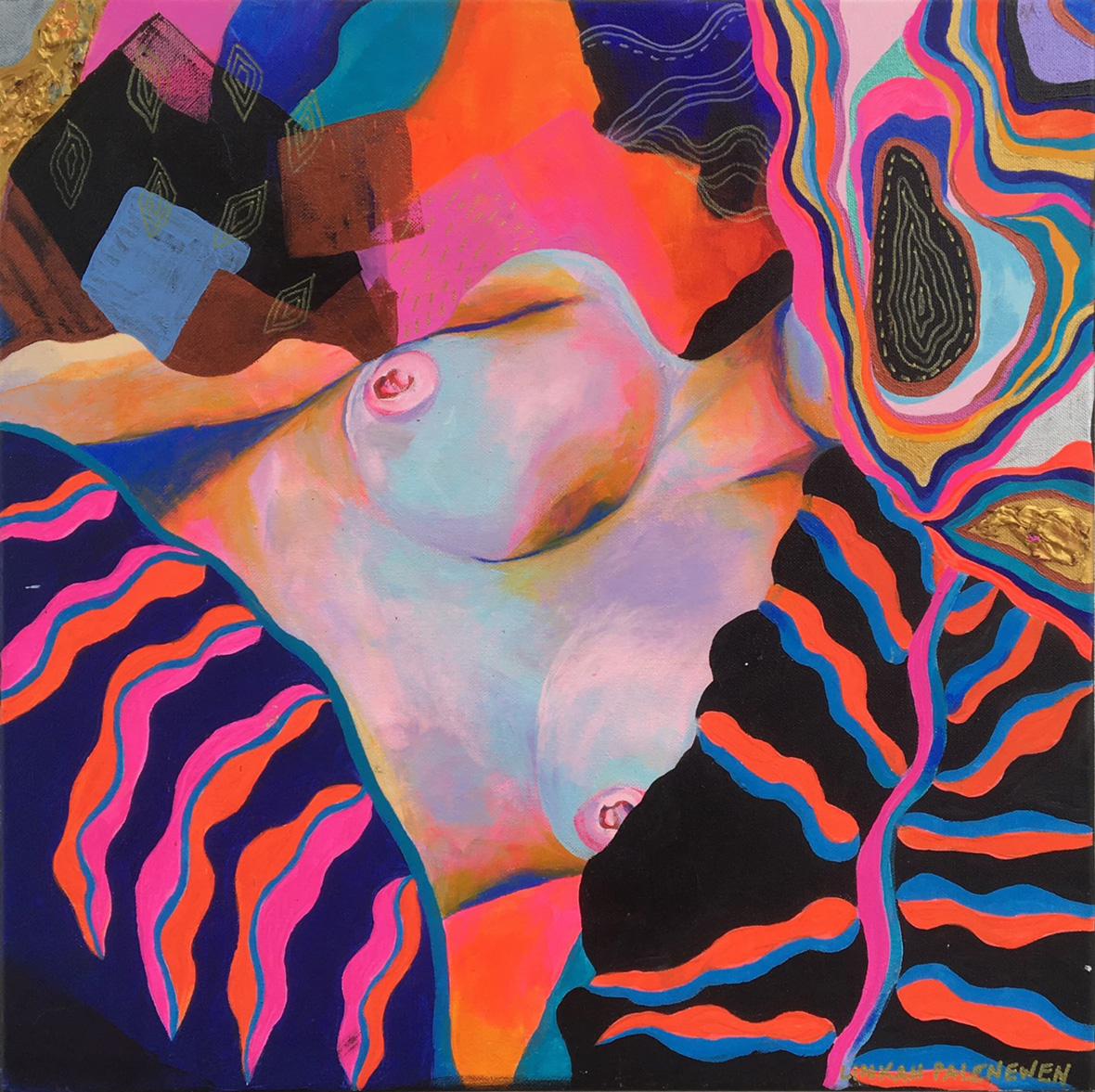
Neocha: Considering the nature of your work, do you think of yourself as a feminist artist?
Palenewen: As a woman from a country that’s long been ruled by patriarchal ideologies, my means of self-expression are inherently limited by culture and religion. I use art as a platform to invite conversation on any topic that may seem taboo. Through art, I feel free to be myself, a woman. So yes, I do consider myself as a feminist artist.
Neocha: 你觉得你为什么是女权艺术家?
Linkan: 印尼是个由男权统治的国家。身为这个国家的女性,我的表达有时被文化和宗教所限制。我的一举一动都被看着,控制着。我利用艺术,苟且有一些自由表达,通过艺术创作,我讨论一些日常生活中的禁忌话题。我通过艺术创作而创造一些自由,这是我自认为是女权艺术家的原因。
Like our stories? Follow us on Facebook and Instagram.
Website: www.candylcker.com
Instagram: @candylcker
Contributor: Ying Ying

